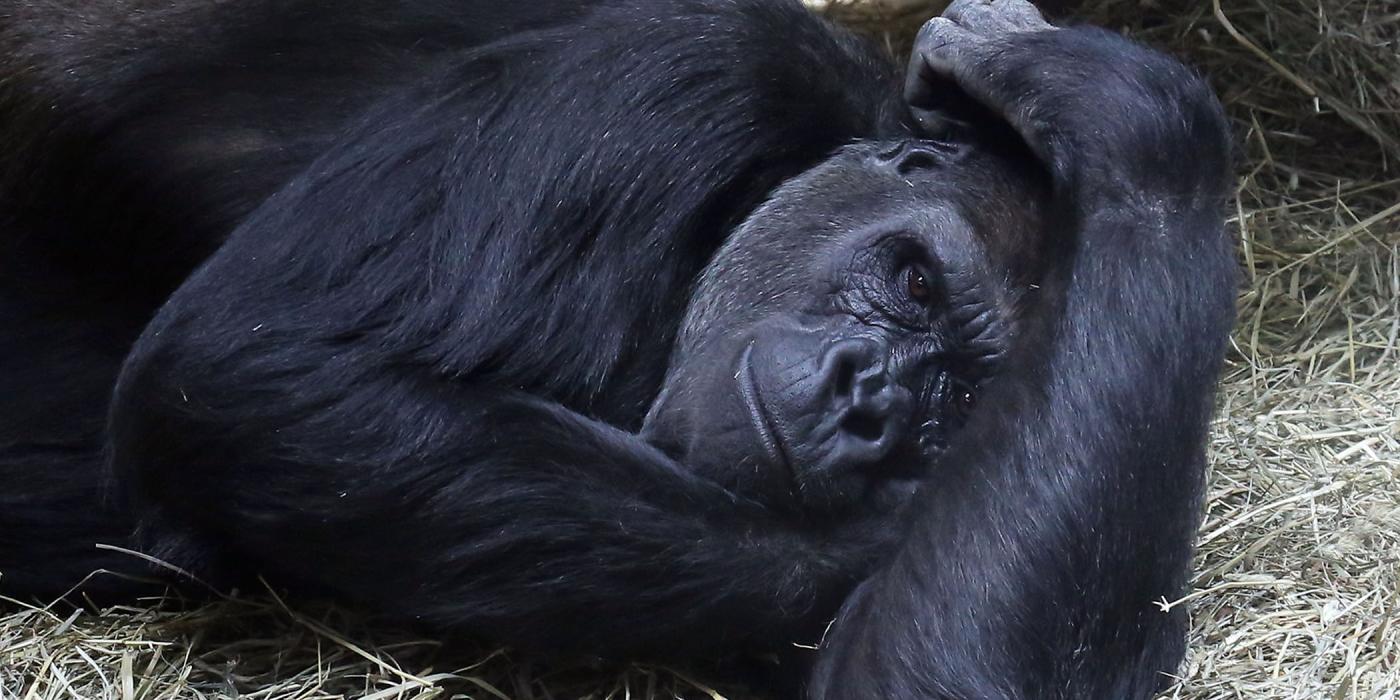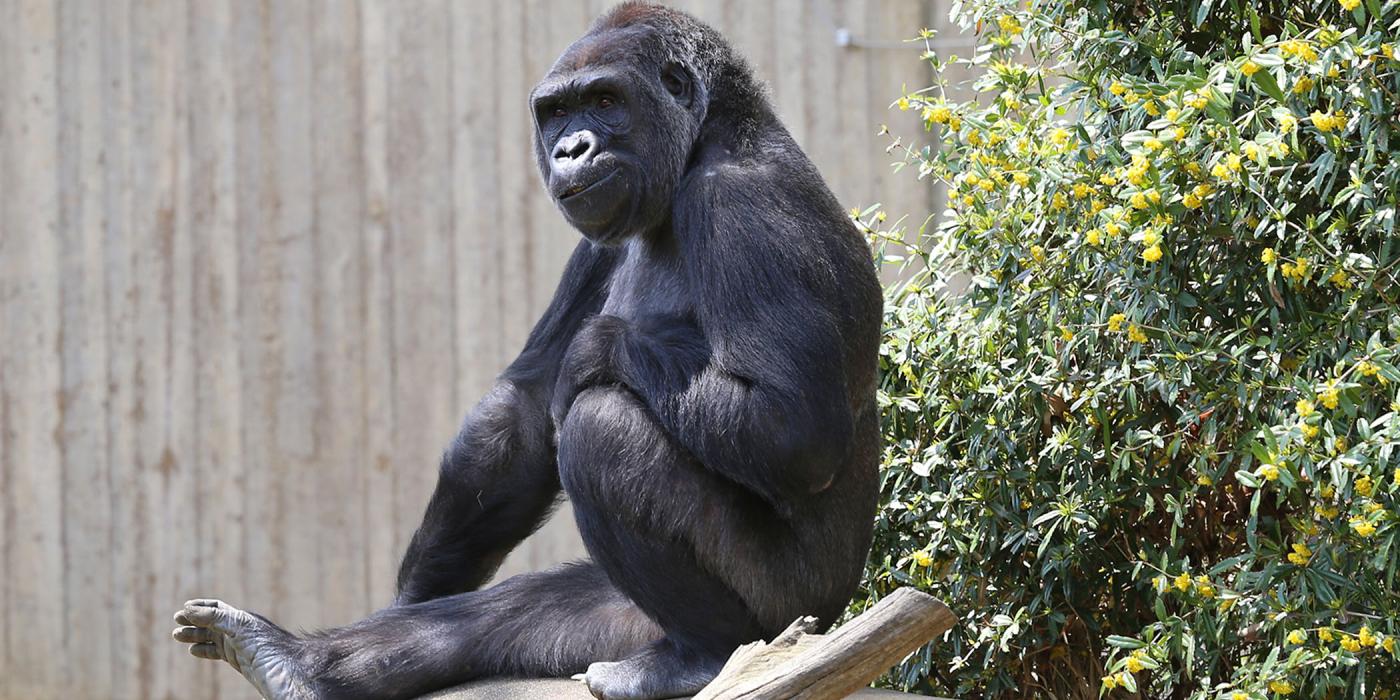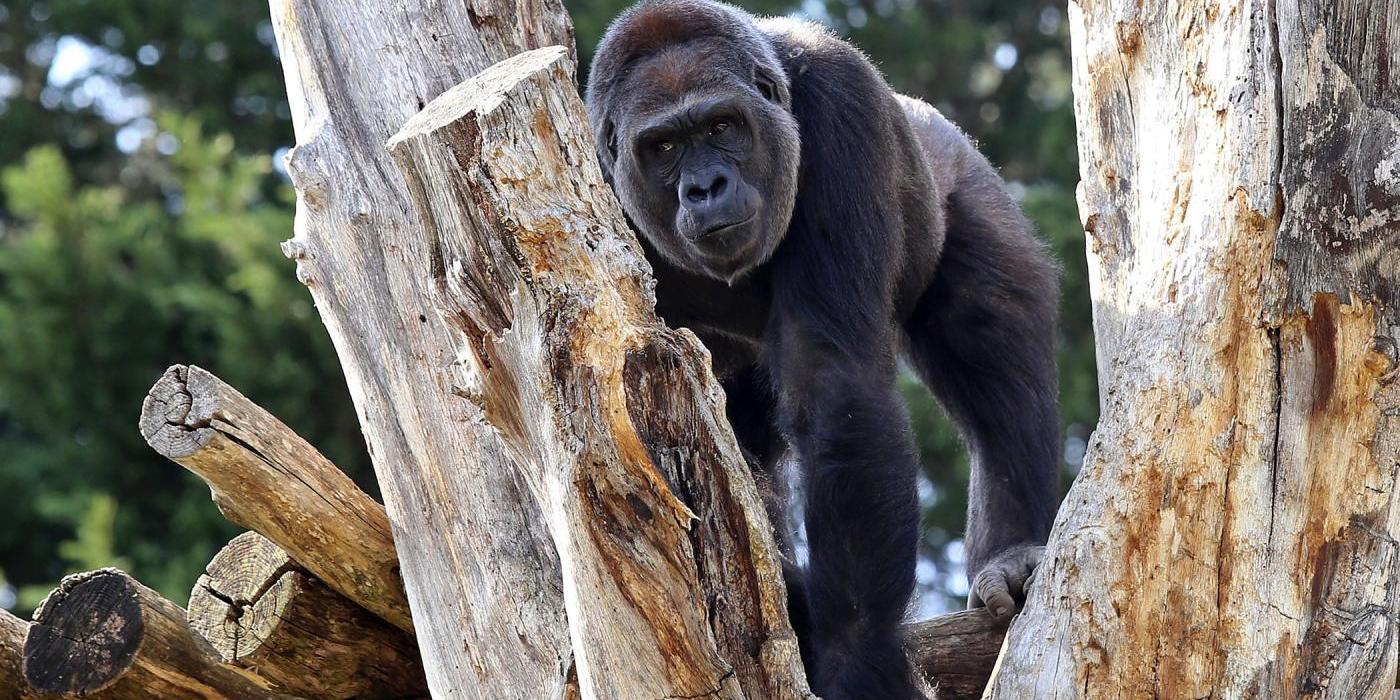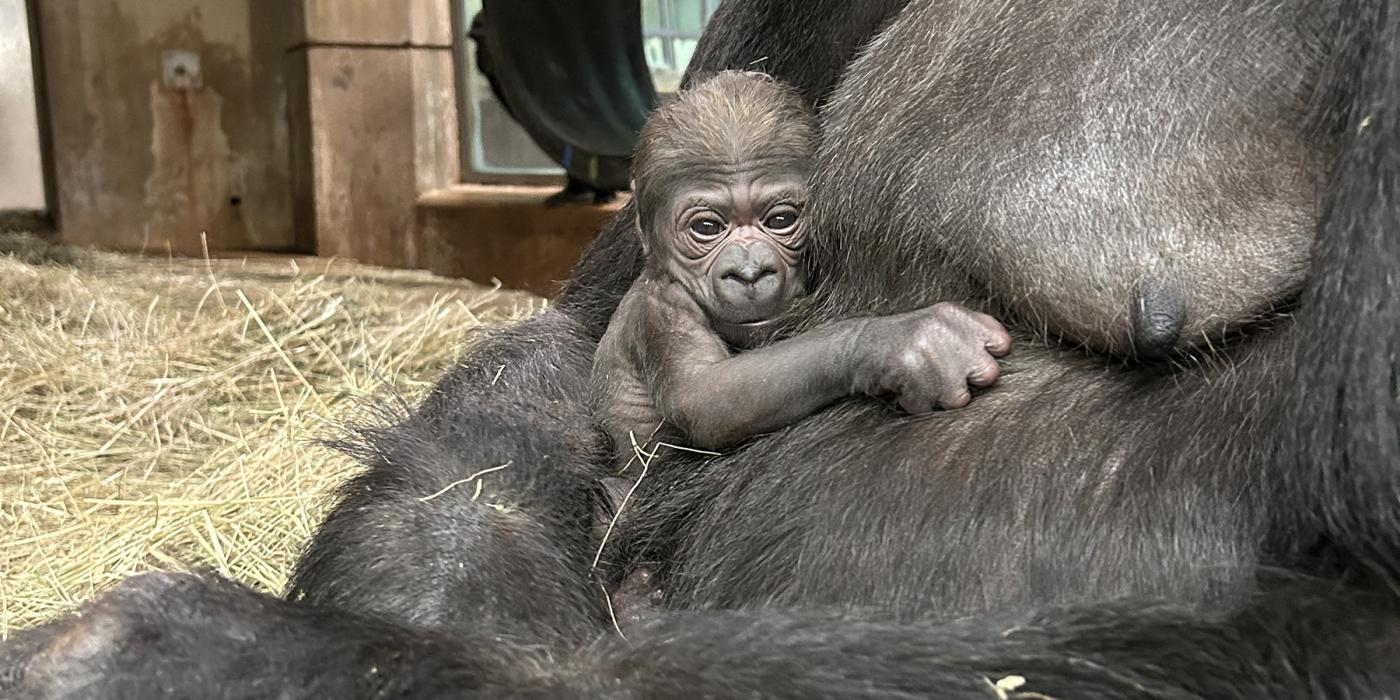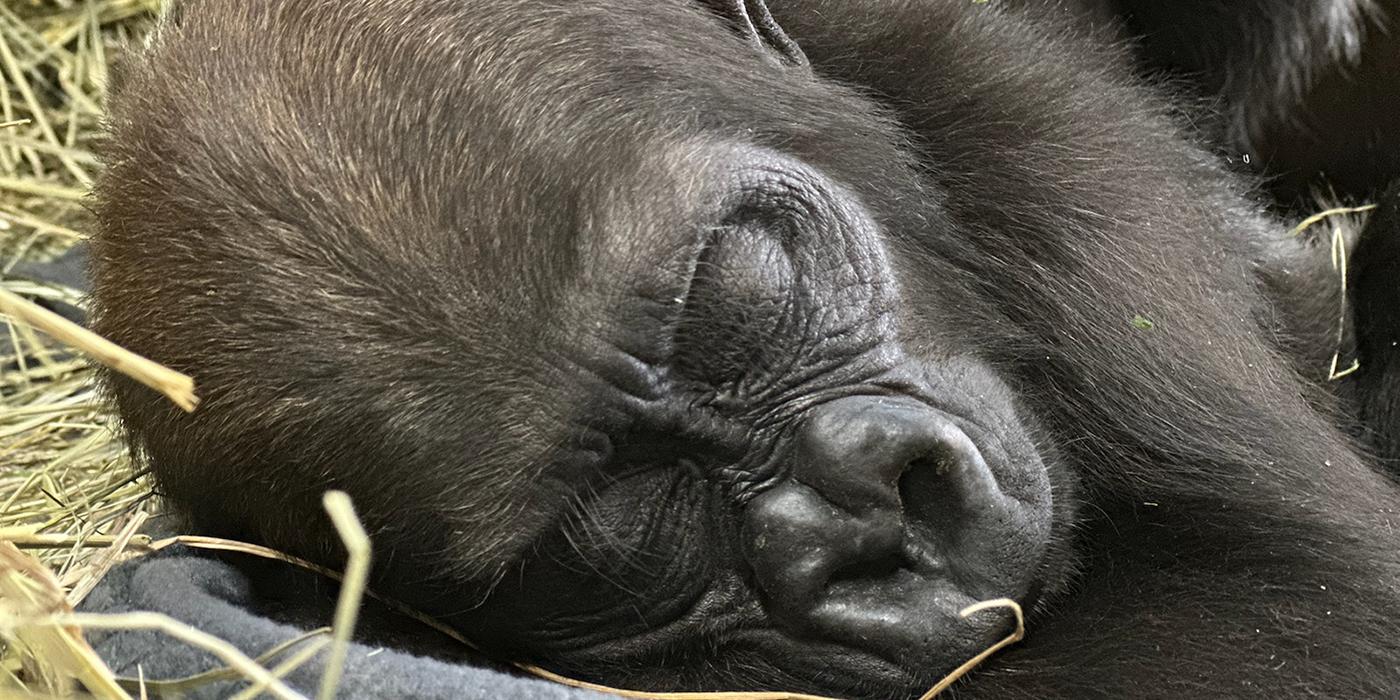Gorilla See, Gorilla Do
Calaya is not like the Zoo’s other western lowland gorillas. For months, keepers tried to encourage Calaya to train and participate in enrichment activities to no avail. Then came an “AHA!” moment: Calaya learned best not solely through human interaction, but by observing the actions of the other gorillas. That breakthrough, says animal keeper Melba Brown, allowed Calaya to quickly master husbandry behaviors and demonstrate her brilliance.
Why was working with Calaya initially challenging?
Moving from one place to another can be quite stressful for any animal. When Calaya first arrived at the Great Ape House in February 2015, she was accompanied by one of her Woodland Park Zoo keepers who sat with her while Calaya adjusted to her new environment.
Calaya exhibited a rather gruff personality and she would routinely grunt and throw her hand up dismissively. When we tried to engage her with training or enrichment items she would avoid eye contact and walk away. The only behaviors she reliably did were presenting her shoulder and hand when we asked for these behaviors.
When did Calaya’s relationship with her keepers begin to change?
There were two revealing moments when Calaya demonstrated just how intelligent she is. One afternoon, I held a child’s piano keyboard so that our mother/daughter pair, Mandara and Kibibi, could play for enrichment. This fun session offered the apes one of our many forms of enrichment to stimulate their visual, tactile and auditory senses. After Mandara and Kibibi played for a few minutes, I reached into my pocket for grapes and gave them each a grape as a reward for interacting with the enrichment. Calaya was close by and observing the activity.
After a few minutes, Calaya came over and displaced Mandara and Kibibi. She sat down, reached her fingers through the mesh, and played a few notes. Then, she stopped and nodded her head toward my pocket where I kept the grapes. It was the first time I saw Calaya exhibit a specific interactive behavior by observing the other gorillas. Needless to say, I was thrilled! I gave Calaya positive reinforcement by saying, “good girl” and giving her grapes. A concrete connection between us was established that would prove to be the foundation for her future training sessions.
When it came to training, Calaya appeared to learn best through observations. She would observe the other gorillas do the behaviors asked of them, and moments later she would insert herself in that space and do the behavior perfectly, looking for a nut or grape reward! For certain behaviors, it only took one day for Calaya to watch another gorilla perform a behavior and master it herself.
What is the secret to getting Calaya to voluntarily participate?
Calaya is actually a very playful gorilla and I use this knowledge to make our training sessions fun. If I approach a training session with a lot of energy, it gets her more excited about participating. When gorillas are content, they make a low-pitched sound called a pleasure rumble. Calaya rumbles with pleasure before and during our sessions. The more positive the interaction is, the more likely a gorilla will do the behavior asked of her or him.
Why is this ‘breakthrough’ important?
Now that we know how Calaya learns best, it gives her many more opportunities to interact with keepers so that we can care for her more thoroughly through husbandry training. In the short span of a year and a half, she has made tremendous progress. Now, she looks forward to our interactions, whether they are training sessions or simply playful interactions.
When it is time for an enrichment or training session, Calaya will often grab an object to sit on (like a spool, hay mound or a milk crate) and she will do all the husbandry behaviors asked of her. We can examine her head, brow, ears, hands, feet, back, chest, belly, arms, shoulders and knees.
These behaviors are the building blocks for more complex behaviors, including maternal training. Calaya came to the Zoo, in part, because she and our silverback male, Baraka, have a Species Survival Plan recommendation to breed. At Woodland Park Zoo, she had exposure to the birth and rearing of an infant. Before we take her off birth control, however, we want to help Calaya, who would be a first time mom, learn how to care for an infant.
She will voluntarily participate in ultrasounds, which will help us track fetal development when she becomes pregnant. Since Calaya learns best by observing others, we show her photos of mothers gently holding and nursing infants. As her maternal training advances, we look forward to working with her throughout her upcoming pregnancy. It will be an exciting journey!
Related Species:

